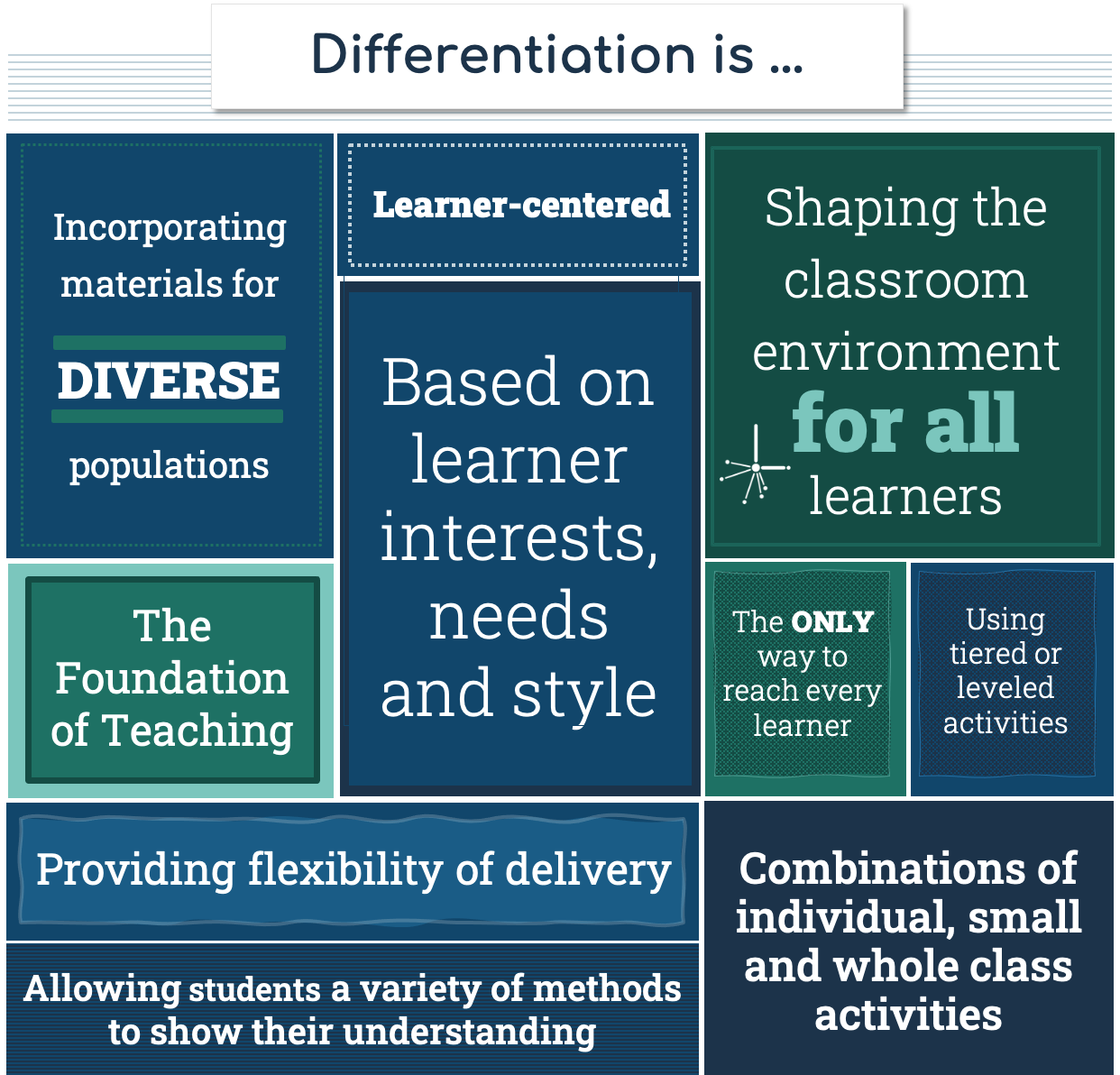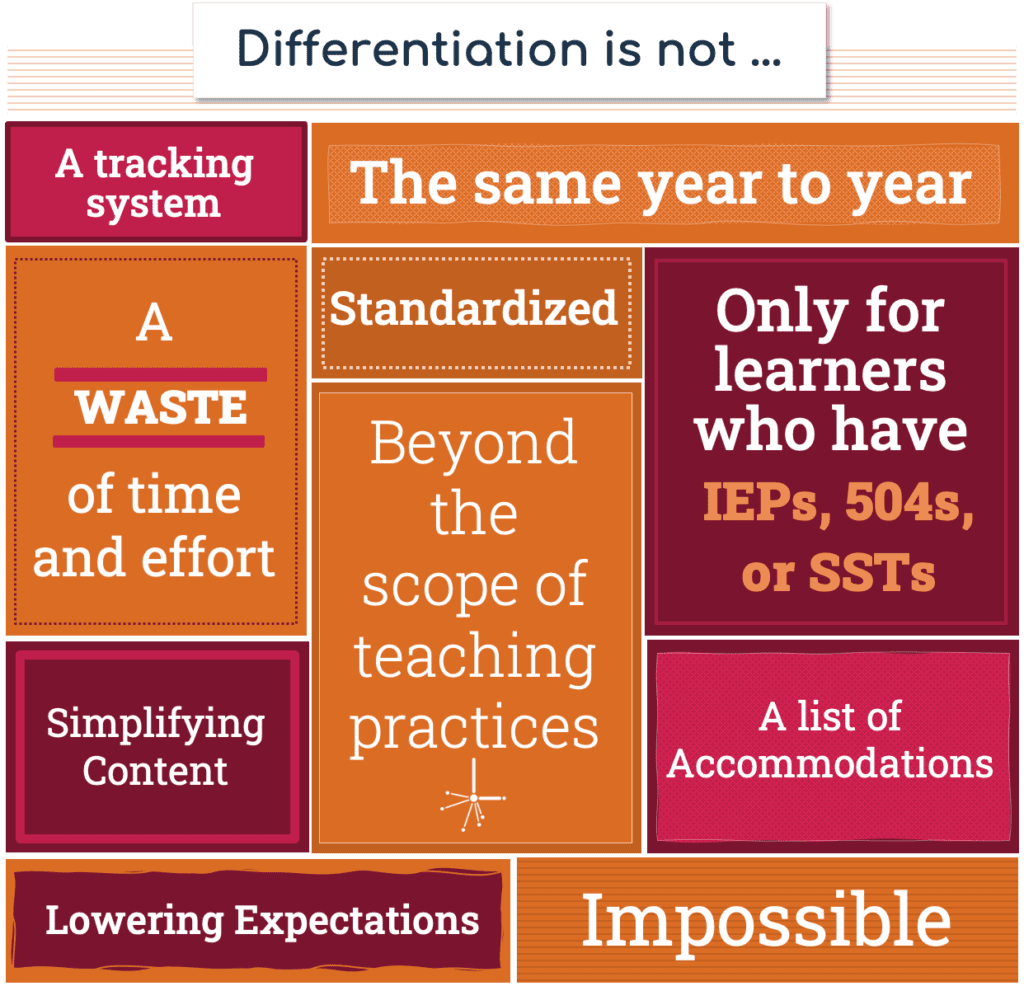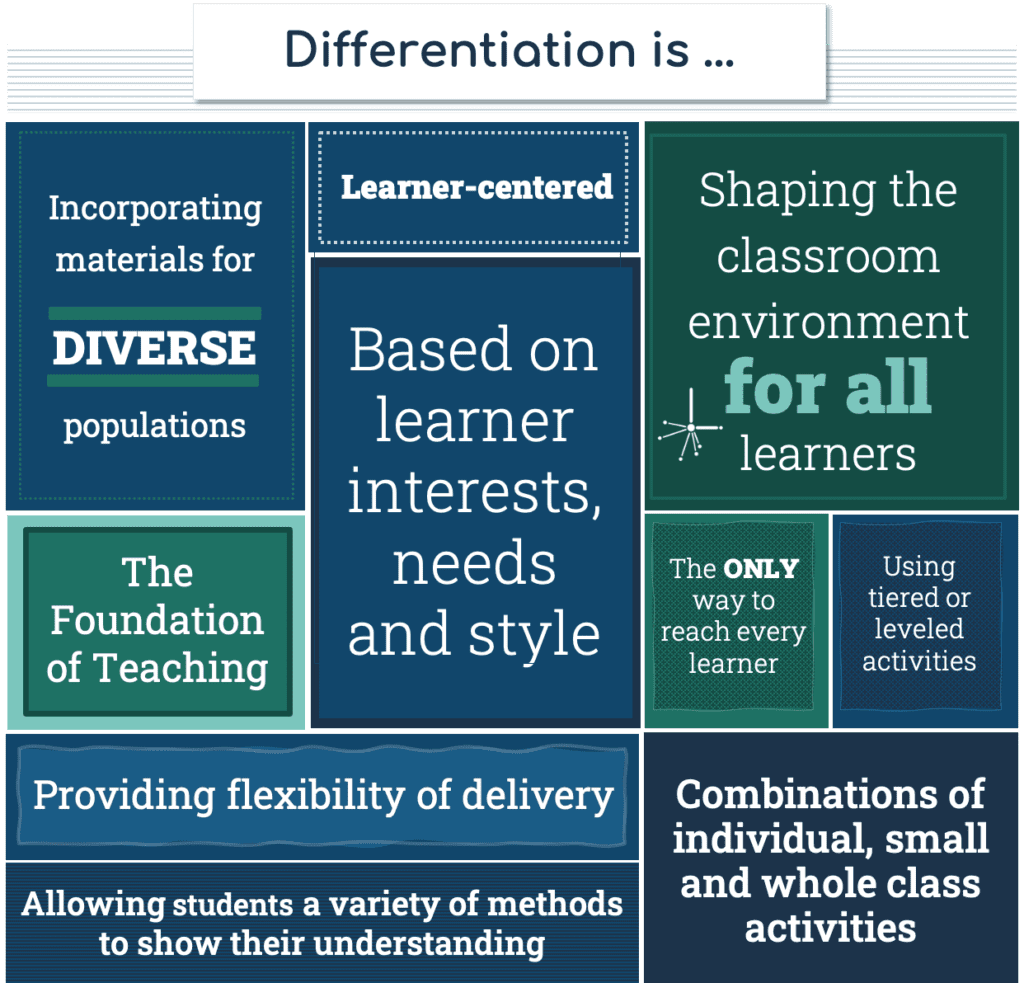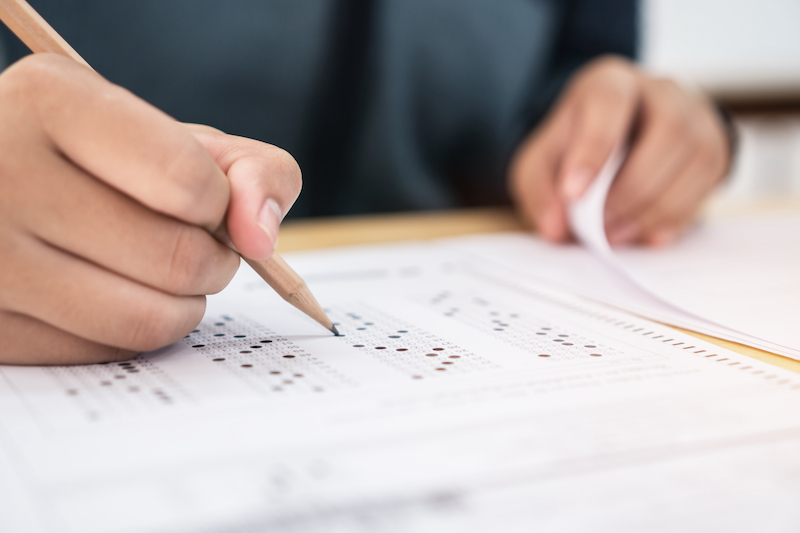By definition, to differentiate is “to recognize or ascertain what makes (someone or something) different, to identify differences between (two or more things or people) and/or to make (someone or something) appear different or distinct.” Seems simple, right? Simple could not be any further from the truth. Educators are challenged every minute of every school day by the layers of differentiation that are required of them, understandably so. When you take into consideration one must react according to the many unique learning styles, the varying attention spans and levels of engagement from learner to learner, and the layers of diversity in both the foundational and applicational skills within each learner, then the demand seems almost impossible.
Research states that only 5% of information delivered in a lecture format is retained, while 50% of discussions, 70% of hands-on practice, and 80% when learners teach to each other is retained. So, in order to meet our ultimate goal of empowering neurodiversity, we are going to try to simplify one of the most complex, yet essential, topics in education today, wish us luck!
There are four ways that an educator can implement instruction on a differentiated basis: content, process, and product.
Content: what the learner needs to learn or how they will access the information being taught.
Process: activities in which the learner engages with the content and others to make sense of and connect to the content.
Product: output exhibited in many fashions to reflect the learners’ knowledge and ability to extend their understanding as well as to think critically about the content.
Environment: the way the classroom looks and feels.
Now that we have the definitions in mind, let’s explore examples of differentiation for each of these categories!
Content:
- Diversify reading materials (levels, interests, densities, etc.) as well as forms of media to gauge how they learn best.
- Provide content recordings, videos, and so forth.
- Use readiness levels to diversify content such as spelling and vocabulary tasks.
- Incorporate a mix of small-group, whole-group, and individual lessons.
Process:
- Use tiered/leveled activities.
- Offer and encourage the use of manipulatives or handheld tools as well as movement/sensory breaks as often as is needed.
- Vary the length of time a learner has to complete an assignment.
- Create interest centers and provide an array of materials for students to access at each.
Product:
- Vary how you assess learners’ knowledge through videos, reports, projects.
- Give learners the chance to answer questions orally or in writing.
- Allow learners to work alone, with a partner or in a group when appropriate.
- Offer the opportunity for learners to create their own projects.
Environment:
- offer flexible seating (wiggle seats, buttons, pillows, standing desks, etc.).
- develop a quiet corner for decompression and sensory needs as well as areas that welcome collaboration.
- provide materials that represent a variety of cultures and family/home settings throughout the classroom.
- maintain systems of routine and structure to support and model Executive Functioning expectations.
The imperative nature of differentiation on both academic and social-emotional levels is evident to educators, parents and learners alike. It is critical that we, as an educational community, always keep in mind Shawn Achor’s classic quote, “If we continue to teach to the average, we will remain average.” Our neurodiverse learners are far from average and we strive to keep them that way by helping guide their path towards their full potential through personalized and differentiated means!














